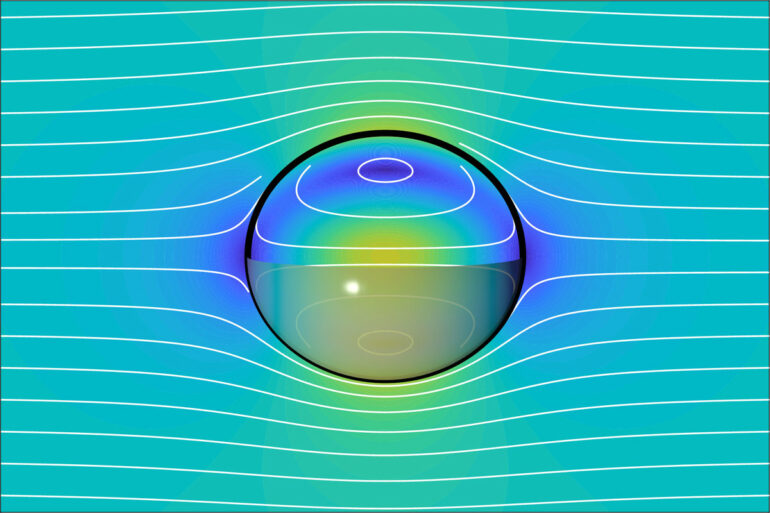The amount of power a microswimmer needs to move can now be determined more easily. Scientists from the department Living Matter Physics at the Max Planck Institute for Dynamics and Self-Organization (MPI-DS) developed a general theorem to calculate the minimal energy required for propulsion. These insights allow a profound understanding for practical applications, such as targeted transport of molecules and substrates.
One of the most important properties of a vehicle, be it a car, a plane or a ship, is its fuel consumption to cover a certain distance at a certain speed. In the microscopic world, there are small objects that can self-propel themselves in a fluid environment. These so-called microswimmers include bacteria and other microorganisms that use cilia or flagella to move, but the term can also refer to artificially fabricated objects. Whereas biological microbes have evolved to swim efficiently, understanding the mechanisms behind self-propulsion is required to design efficient artificial microswimmers.
A new approach to describe the movement of microswimmers
Whereas many models have so far treated microswimmers as if they were pulled or dragged along by an external force, the new model focuses on the energy required for self-propulsion of the microswimmer. “Many optimization problems that needed the use of computers in the past can now be solved with pen and paper,” says Andrej Vilfan, group leader at MPI-DS.
The results also can be used to determine the most efficient shape of active microswimmers. “Whereas at first glance the resulting shapes might look surprising to us, a closer look shows that they actually bear striking similarities with the shapes found in nature,” explains Vilfan.
Optimizing the design of artificial microswimmers
The newly proposed model, now published in Nature Communications, elucidates the difference in entropy production between active microswimmers and externally driven particles.
On the microscopic scale, entropic effects play a crucial role for particle movement. “Our results thus have impact on several research fields, such as microfluidics, biophysics and material science,” says Abdallah Daddi-Moussa-Ider, first author of the study.
Microswimmers have the potential to transport particles and molecules such as medical drugs in a directed manner to a target area. “A profound understanding of the principles of movement of the microswimmers thus opens many possibilities for innovation and practical applications,” Daddi-Moussa-Ider says.
More information:
Abdallah Daddi-Moussa-Ider et al, Minimum entropy production by microswimmers with internal dissipation, Nature Communications (2023). DOI: 10.1038/s41467-023-41280-z
Provided by
Max Planck Society
Citation:
Scientists develop theorem to calculate fuel economy of a microswimmer (2023, October 12)



